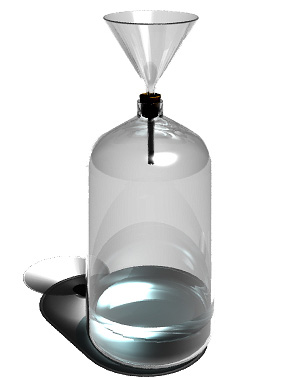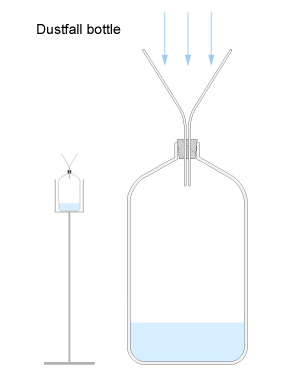Measuring dust

Dustfall is the term used to describe air particles that settle down over a given area and time under the influence of gravity.
Measuring dustfall can determine if a particle source is causing unacceptable dust nuisance in surrounding areas.
Dustfall deposit gauge
Dustfall is measured with a dustfall deposit gauge, typically mounted on an elevated stand to avoid surface dust interference.
This simple piece of monitoring equipment comprises a glass funnel supported in the neck of a large glass bottle.
Diagram 2 shows how the gauge is typically set up on the elevated stand.

It is usually necessary to sample dustfall over 1 month to ensure a measurable quantity of dust is captured in the gauge and can be sent to a laboratory for analysis.
The dustfall rate is calculated by dividing the weight of insoluble material collected (in milligrams) by the cross-sectional area of the funnel (square metres) and the number of days over which the sample was taken. The units of measurement are milligrams per square metre per day.
Dustfall is not affected by the colour of the dust but darker dust is usually perceived by the public as having more impact than light-coloured dust.
Levels in industrial areas are usually higher than in residential areas.
Chemical analysis of the collected dust can help identify pollutants and locate likely emission sources.


